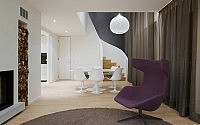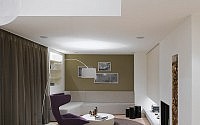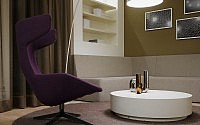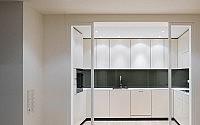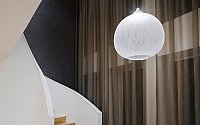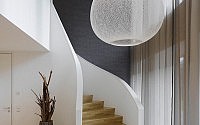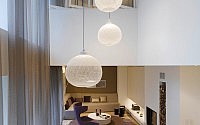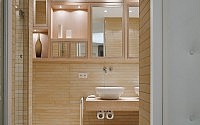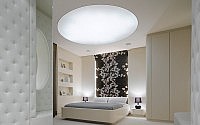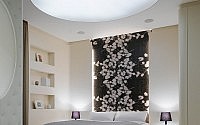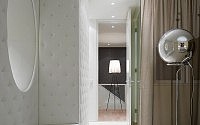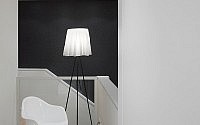Quant 1 Residence by Ippolito Fleitz Group
QUANT is a luxury, new apartment complex in a converted 1950s laboratory building in Stuttgart, Germany. It was designed in 2008 by Ippolito Fleitz Group.

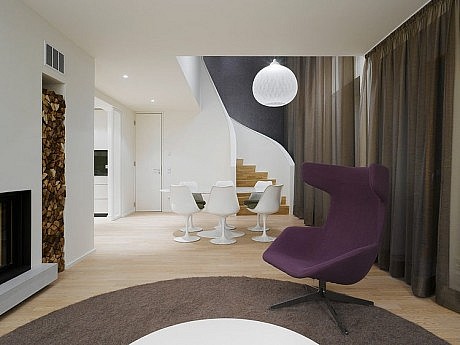
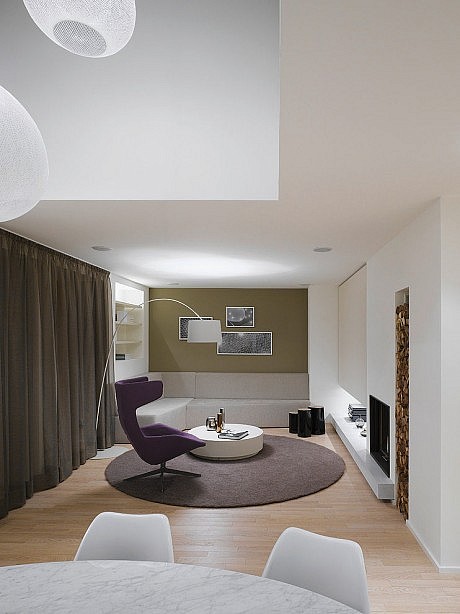
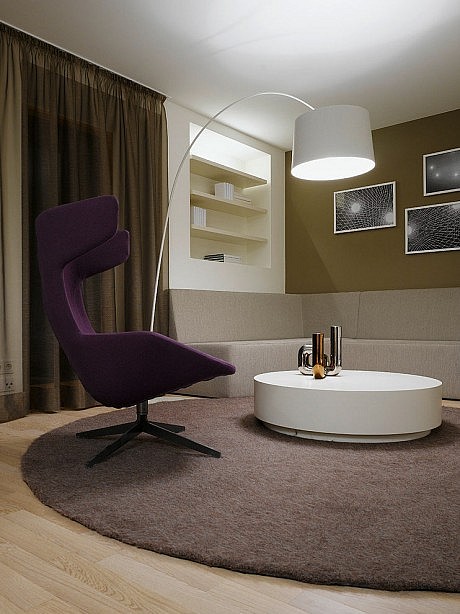
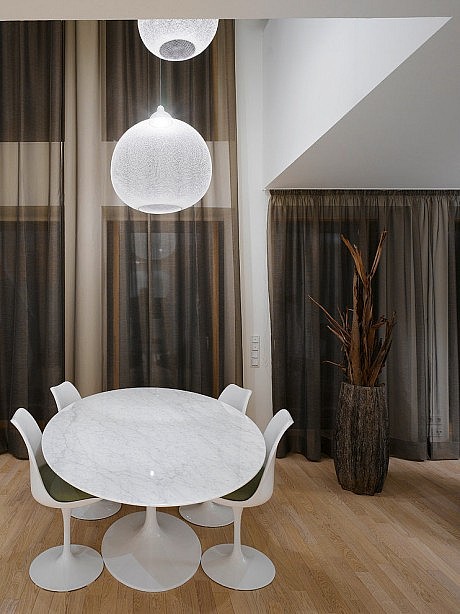
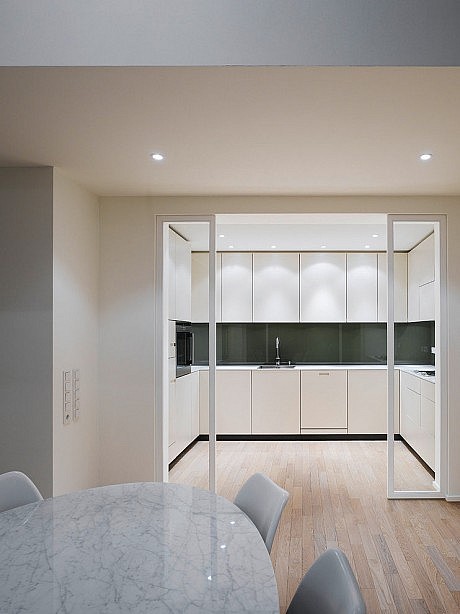
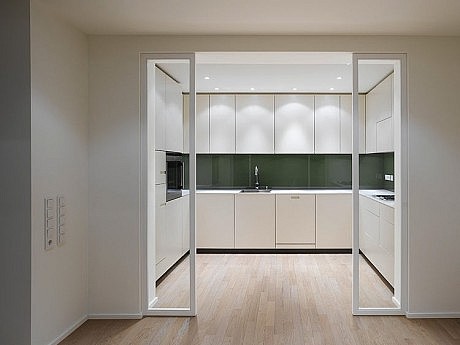
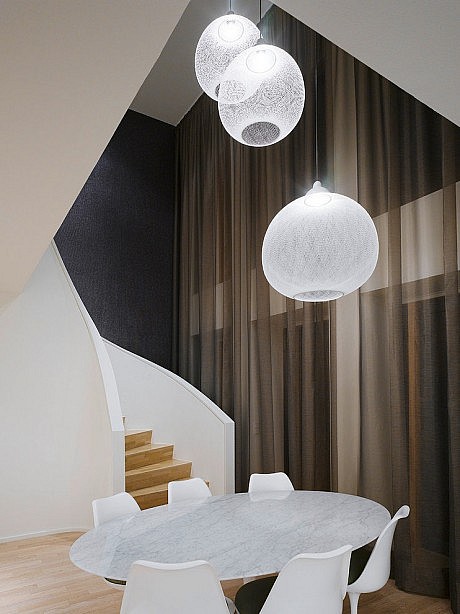
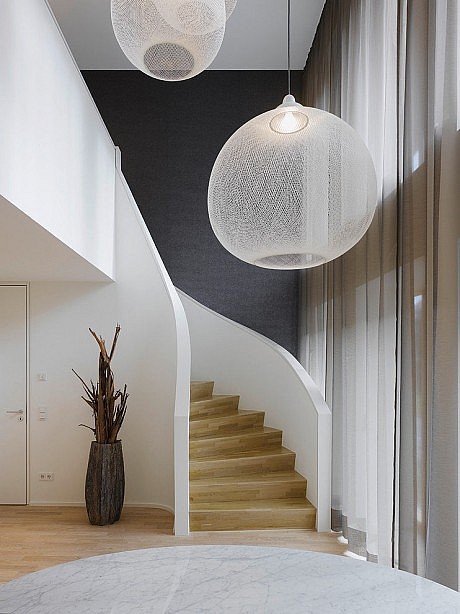

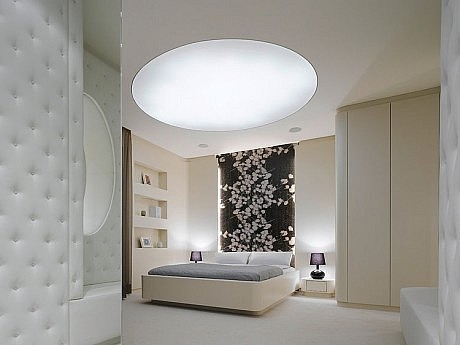
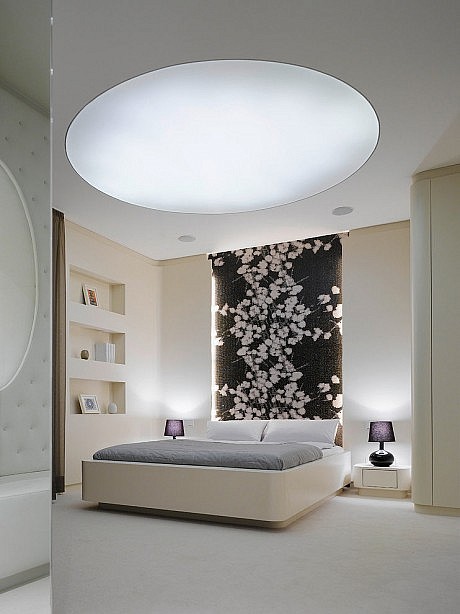
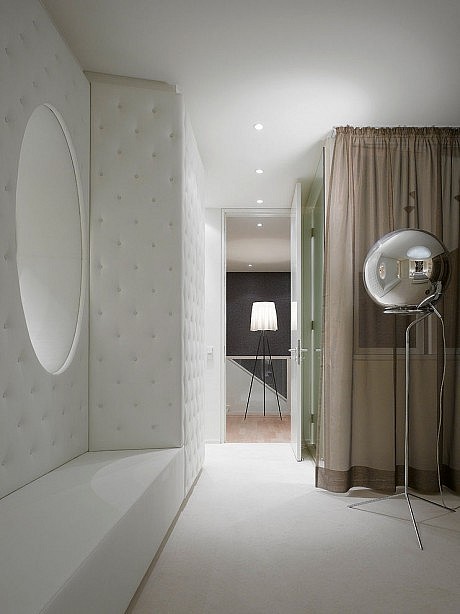
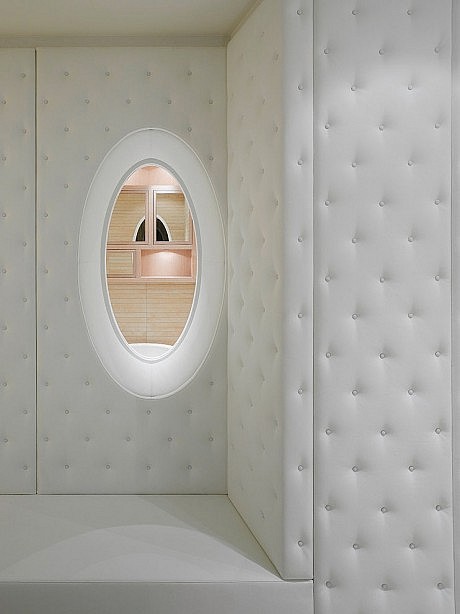
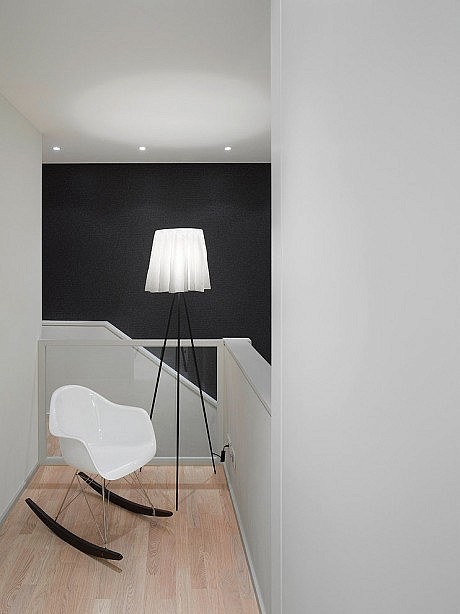
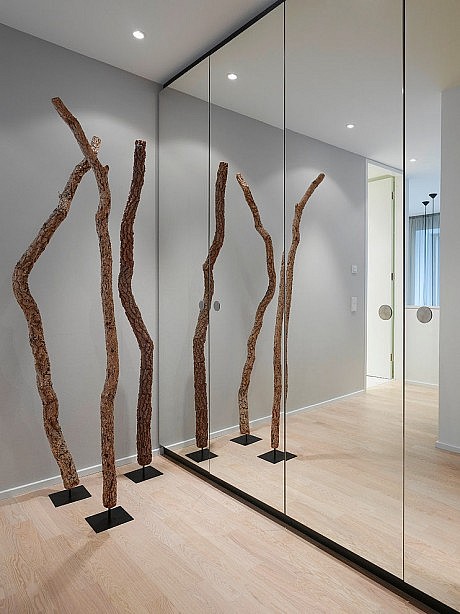
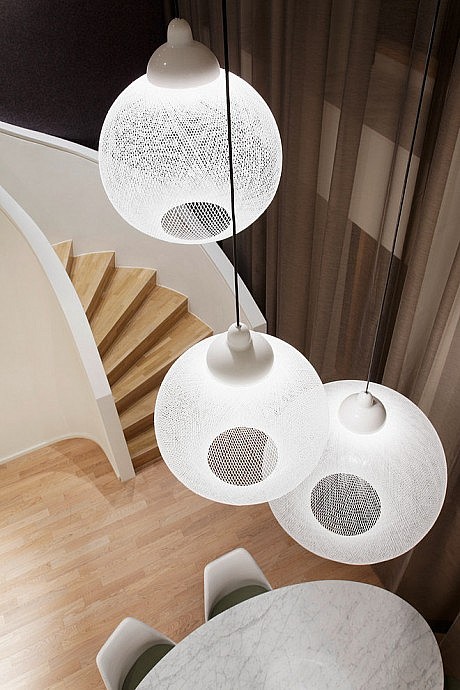
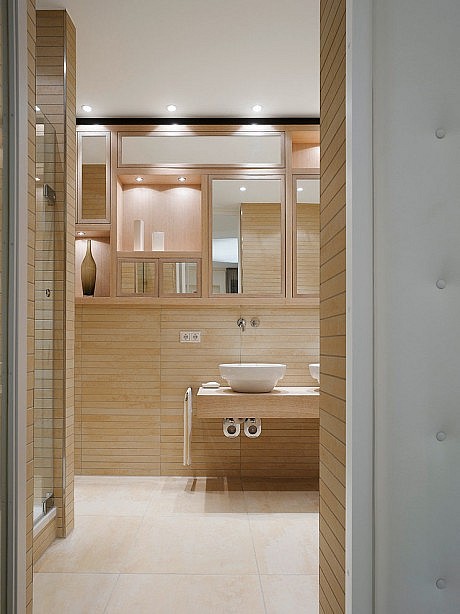
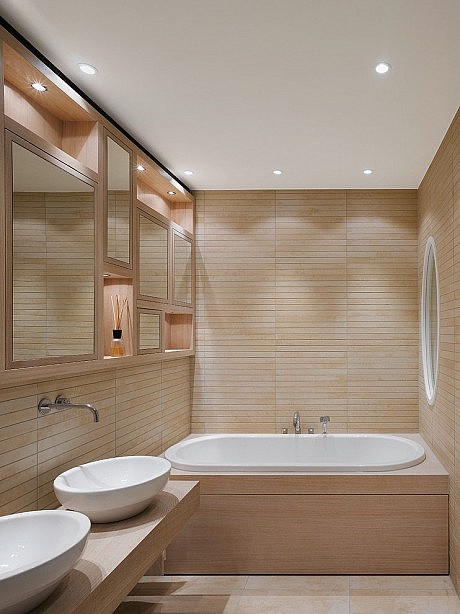
Description by Ippolito Fleitz Group
The exclusive apartment complex is situated in one of Stuttgart’s prime residential areas within convenient walking distance of the city centre. To give potential buyers a feel for the multifarious design possibilities inherent in a QUANT apartment, the landlord, LBBW Immobilien GmbH, has commissioned some exceptional model apartments to serve as illustration. ippolito fleitz group has created two unique interiors to complement the building’s sophisticated exterior, designed by Wilford Schupp.
Quant 10 was the first model apartment to be realised in 2008; Quant 1 followed suit in 2009. The client commissioned an apartment, whose character would particularly appeal to the target group of single women. Femininity and sensuality thus play an important role in the design and furnishings. Despite its compact layout and clearly defined living zones, the apartment appears extremely spacious, an effect that was achieved through a strong emphasis on transparency and openness in the design of the individual elements.
A glamorous, curved staircase forms the central core of the apartment and opens up the two floors to create an open airspace, around which all the other rooms are grouped. Stepping onto the staircase thus becomes the ideal way of experiencing the apartment in its entirety. The private rooms, consisting of bedroom, bathroom and dressing room, are nestled together on the upper floor. The bedroom, though a self-contained room in the classical sense, is also open to three sides. The façade wall offers a stunning view to the outside. Opposite the bed, the bedroom opens down onto the dining area via four synchronised windows, with a curtain for when discretion is required. On the other side of the room, an oval window enclosed within a Chesterfield-upholstered seating niche, which creates a sensuous boudoir effect, provides a visual link to the bathroom.
The materiality of the bedroom is characterised by soft fabrics: A thick-pile, velour carpet, white, upholstered leather, a diaphanous yet opulent expanse of curtain, and flower motif wallpaper on the wall behind the bed are offset and complemented by off-white bedroom furniture. The adjoining bathroom is enclosed by porcelain stoneware executed in horizontal stripes, generating a very tactile feel. A mirrored bathroom cupboard of whitewashed oak stretches along the length of the room. With its mirrored doors and multiple illuminated compartments, it exudes a sense of abundance and offers generous storage.
The entrance area of the apartment, which appears twice the size thanks to a mirrored wardrobe, leads directly to the staircase and down into the dining area, which is open over the entire height of both floors. The lofty space is dramatised by three pendant luminaires suspended from the ceiling and a wall of curtains hung all the way down one flank of the room. The dominance of whitewashed oak furnishings on the upper floor is continued in the living and dining areas in the form of a whitewashed parquet floor. A continuous expanse of floor guides the eye towards an open kitchen, which is vis-à-vis the dining table. The kitchen surfaces are solid surface, which contrasts admirably with the retracted, green-varnished glass wall.
All in all, natural colours and materials preside throughout the entire ground floor, including the living area. A tall pile of logs and an open fireplace with a concrete lip make a cosy impression, even without a crackling fire in the grate. Firm colour accents have been splashed across the ground floor in the guise of a lilac armchair and structured wallpaper on the staircase wall, which evokes a glass mosaic. In the summer months, the entire ground floor can be opened up to the outside terrace via the large window front.
Photography by Zooey Braun
- by Matt Watts
